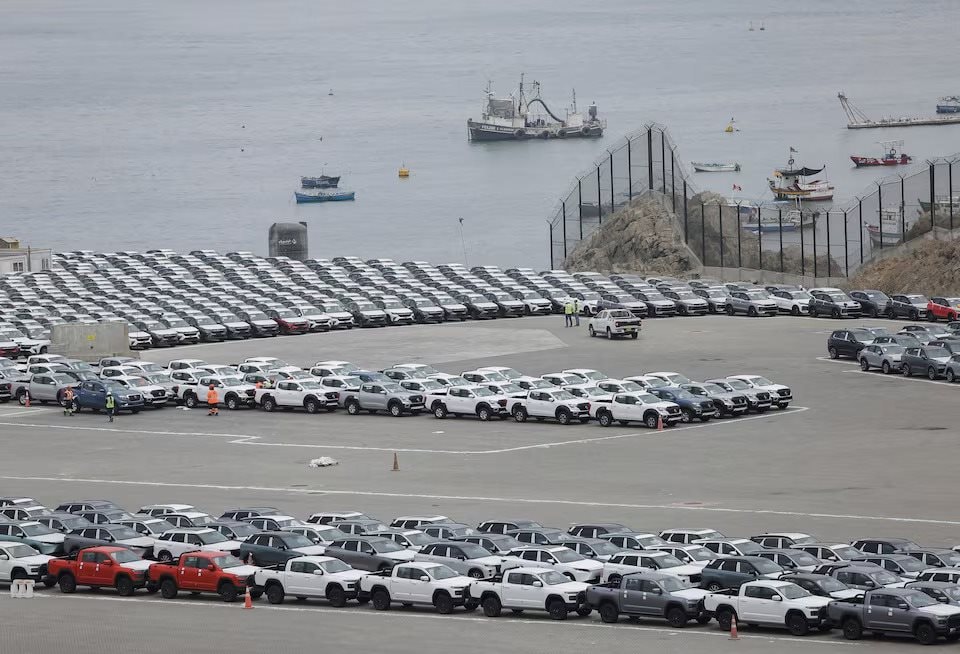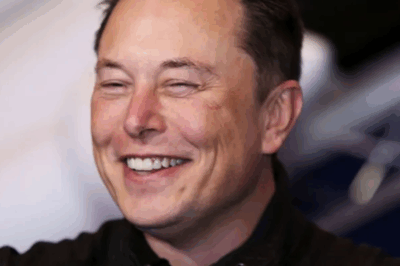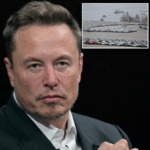Chinese electric vehicle brands are expanding in the region, challenging Western automakers.

In 2019, Luis Zwiebach, a renewable energy entrepreneur from Peru, flew 4,000 miles to California to test drive a Tesla Model 3. However, because Tesla does not have an official importer in Peru and the vehicle clearance process is complicated, he was unable to buy a new car.
But Zwiebach didn’t give up. “I found someone who had imported a Tesla and wanted to sell it,” he says. “I went to see it and decided to buy it.”
When he took the car to a friend’s house outside Lima, he ran into trouble charging it. “The car wouldn’t accept the charging port because it didn’t have a ground,” Zwiebach said. “We had to ground a fork in the ground to get it to charge.”
Chinese electric cars flood into Peru
Today, buying an electric car in Peru is much easier. Tesla has yet to open a showroom, but Chinese brands like BYD, Geely, and GWM have already moved in, selling cars for about 60% of Tesla’s price. Traditional brands like Toyota, Kia, and Hyundai are also expanding their electric vehicle portfolios.
According to the Peruvian Automobile Association, 135,394 new cars were sold in the first nine months of the year, of which sales of electric and hybrid vehicles reached a record 7,256, up 44% over the same period.
China’s exports have accelerated since the opening of Chancay, a Beijing-built “superport,” last year. The port has cut trans-Pacific shipping times in half, just as China faces growing trade barriers in the United States and Europe.
BYD plans to open a fourth dealership in Lima later this year. Chery and Geely already have more than a dozen dealerships in Peru.
“At this rate, more than two new electric cars are sold every day in Peru,” Zwiebach said from Lima.
The increased demand has allowed the entrepreneur to expand his renewable energy business, installing EV chargers and solar panels for developers, universities and shopping malls in Lima and Arequipa.
“One developer said he would buy the penthouse if it had a car charger,” Zwiebach says. “So we installed it. Just plug it in like you would a phone charger.”
Pushing into new markets
According to expert Felipe Munoz (JATO Dynamics), Chinese car manufacturers are facing fierce price competition at home and overcapacity. Therefore, they are increasing exports to the Middle East, Central Asia and Latin America.
In Chile, Martin Bresciani, president of the Chamber of Automotive Commerce (CAVEM), said Chinese brands “have proven their quality meets global standards.” Chinese vehicles accounted for nearly 30% of the new car market in Chile in the first quarter.
According to the International Energy Agency (IEA), the share of electric vehicles in Latin America – which includes Mexico and Central America – is set to double to around 4% by 2024. The latest figures show that electric vehicles accounted for 10.6% of new vehicle registrations in Chile in September, 9.4% in Brazil in August and 28% in Uruguay in the third quarter. These are all record highs.
In Argentina, EV sales are also growing despite economic difficulties and trade barriers. BYD officially entered the market in October and is now the market leader in electric vehicle sales in Brazil, Colombia, Ecuador and Uruguay.
Chinese companies have found success by partnering with local importers and offering models tailored to local tastes, according to a Reuters survey of dealers in Peru, Chile, Uruguay and Argentina.
In Uruguay, BYD is now the third-best-selling car brand in the entire market, behind only Chevrolet and Hyundai. Its market share of Chinese cars has doubled since 2023 to 22%.
In Punta del Este, dealer Stars Motors says BYD sales are outpacing many European and Japanese brands.
According to IMF data, the GDP of the South American region is expected to reach 4,500 billion USD by 2025.
New gateway for Chinese EVs
At the mega-port of Chancay, once a small seaside tourist destination, rows of white sedans and multicolored shipping containers now line the port. “Each ship carries 800–1,200 vehicles,” said Gonzalo Rios, deputy director of Cosco Shipping, which expects to ship 19,000 vehicles from China to Peru this year.
From the port, the cars are then shipped to Chile, Ecuador and Colombia. Chinese automaker Chery is using the shipping route to shorten delivery times across the region.
According to Peruvian customs data, 3,057 vehicles arrived in July alone, compared with 839 in January.
Brazil, South America’s largest auto market, is seeing increased competition. Several Chinese companies are investing in factories there. For example, BYD has been assembling cars at a former Ford plant in Bahia since October, while GWM began partial production at a former Mercedes-Benz facility in August.
GWM expects to export vehicles produced in Brazil to South America from 2027, taking advantage of trade agreements with Mexico, Chile and the Mercosur bloc.
Meanwhile, large numbers of Chinese cars are still being imported into Brazil. Earlier this year, the world’s largest EV ship docked at the port of Itajai, carrying around 22,000 units.
Brazil could become a regional distribution hub similar to Chancay, with the port of Vitoria currently leading in vehicle imports.
Brazilian industry and unions have accused China of using low EV tariffs to “dump” its inventory instead of investing in deeper production. The Brazilian government has reimposed an import tax on EVs, which is set to rise to 35% by July 2026.
BYD plans to ship vehicles from Brazil to Argentina by 2027. The company expects the EV penetration in Argentina to “catch up with Brazil.” However, expanding the electric vehicle market in South America still faces challenges due to long distances and sparse charging networks.
“If you wanted to drive along the Peruvian coast from Tumbes to Tacna, it would be difficult,” Zwiebach said. “But the running costs are low and the car hardly ever goes into a garage.”
News
Louis Tomlinson helped his former bodyguard, who needed life-saving surgery, with a large sum of money
Louis Tomlinson donates huge sum as One Direction security requires life-saving surgery Louis Tomlinson has donated a huge amount to…
Apple cooperates with xAI? Elon Musk ‘nodded’, but Apple ignored it!
CEO Tim Cook is about to retire, billionaire Elon Musk is unexpectedly called As rumors swirled about Tim Cook’s impending…
Grok praises handsome Elon Musk as ‘the number 1 great man in history’
Grok praises Elon Musk as ‘the greatest man in history’ Grok’s series of responses describing Elon Musk as handsome, a…
Princess Diana and Harry Styles are unrecognisable in festive transformation
This year’s crop of celebrity baubles are hilarious.. But they may have been designed for the charity shop View 11…
Elon Musk: ‘Money will be meaningless in the future’
According to Forbes, Elon Musk’s current fortune is around 467 billion USD. The tech world has recently been divided on…
“Oh!!!” PGA Tour caddie claims Jack Nicklaus ‘was not even close’ to Tiger Woods in one key area
Jack Nicklaus and Tiger Woods are regarded among the all-time greats, with 33 major championships won between them. Nicklaus accounts for…
End of content
No more pages to load












